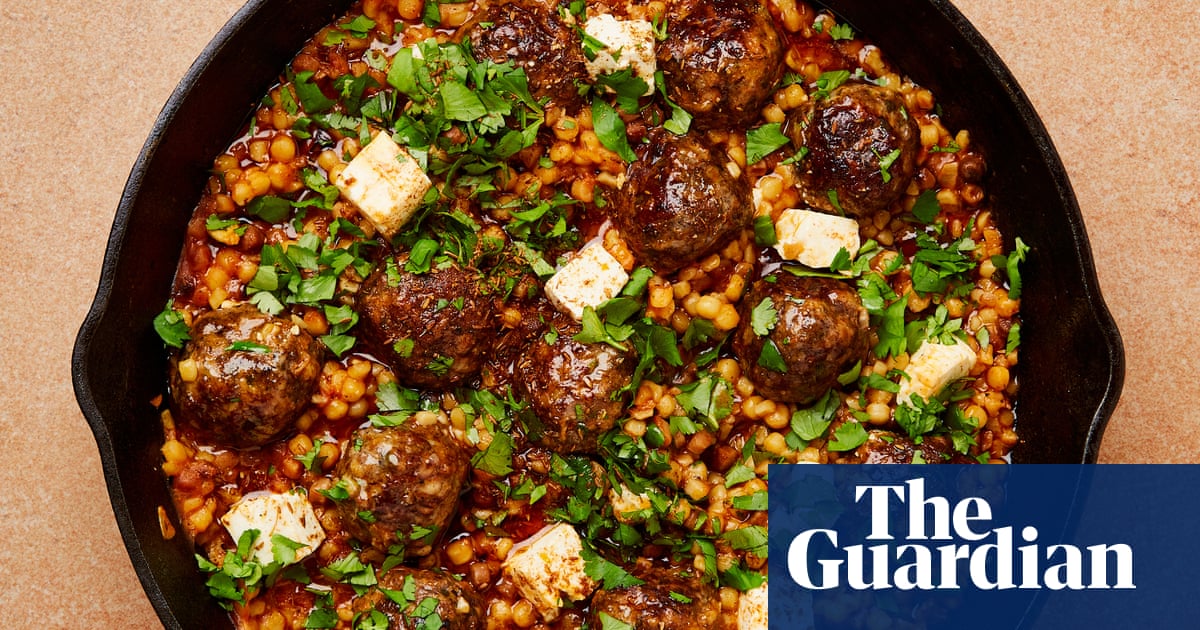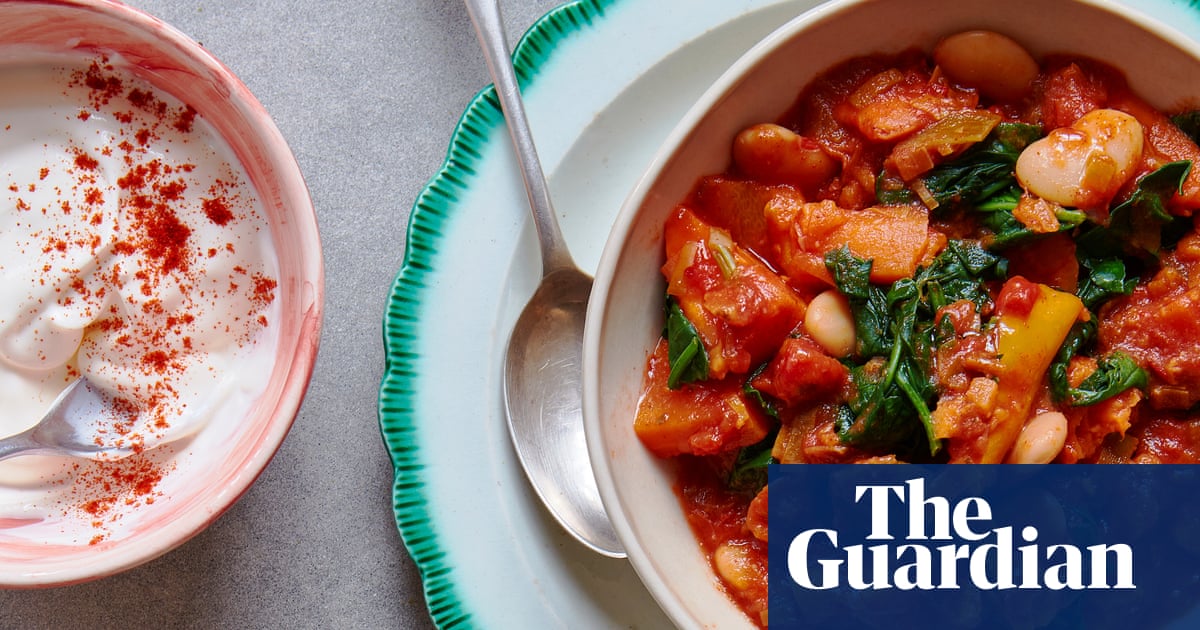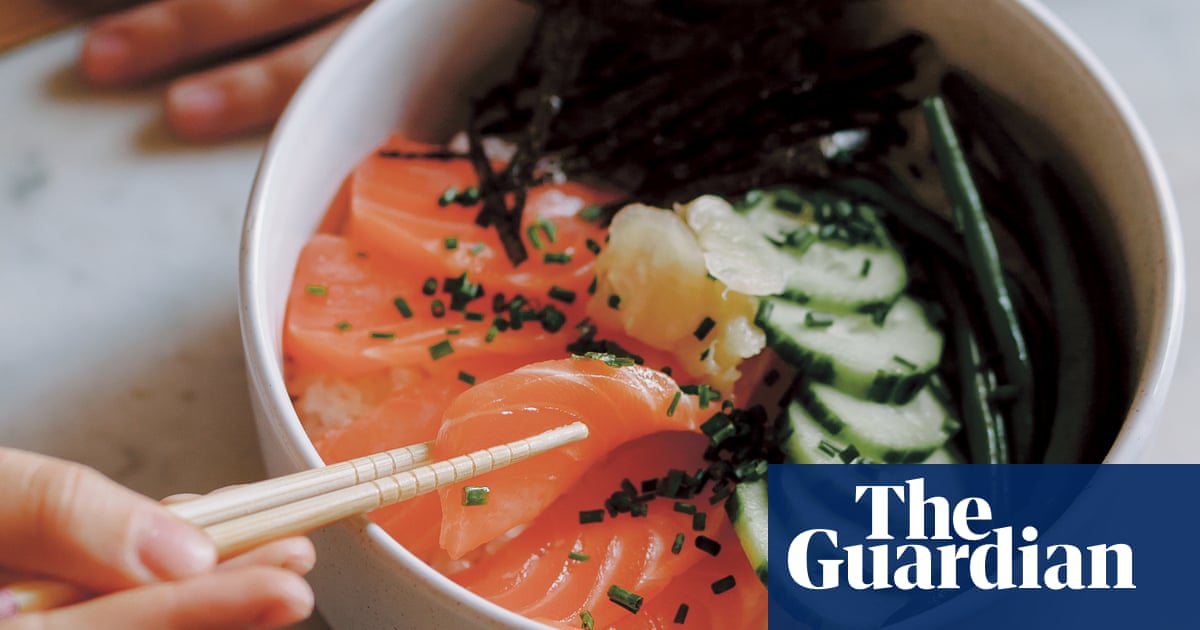
y American mother would have called it a Dutch oven, although a lot of people in the US call a Dutch oven a French oven, while the French call it a casserole. I think a true Dutch oven is a piece of camping equipment, with a hanging handle and stubby little legs, but that is not what my mother meant. My mother did not camp.
What I am trying to describe is a pot, round or oval, with fairly high sides and a snug-fitting lid. They are usually enamelled cast-iron and they can be ruinously expensive, although you sometimes see good secondhand ones at car boot sales. My wife once got two giant Le Creuset casseroles from a market stall for £20 because the guy selling them had put one inside the other and couldn’t get them apart. I was prepared to deploy any number of drastic separation strategies, but a screwdriver wedged between the handles did the trick.
Anyway, the point of these pots is their flexibility – you can put a Dutch oven on the hob or in the oven, or switch from one to the other mid-recipe. Whatever you want to call it, here are 17 delicious and occasionally surprising ways to get the most from it.
One of the chief uses of a heavy casserole is the slow and desultory roasting of meat. For the ideal Easter lunch, Simon Hopkinson suggests a pot roast lamb with endive. As Hopkinson says, this method is ill-advised for a tender spring leg, which ought to be served pink, but he thinks Easter is a bit early for that anyway. He recommends half a shoulder – the blade half, rather than the knuckle half, if possible – cooked until it falls away from the bone.
Gill Meller’s lamb, barley and kale broth is more of a stew than a roast, using pearl barley and two shanks of lamb – or mutton, if you can get it.
A pot roast is a good plan for lean beef cuts such as topside, which otherwise tend to dry out before they are done. Here, it is browned all over and then slow-cooked in white wine and beef stock.
Rachel Roddy combines pork (boneless shoulder) with porcini and gently crushed juniper berries to make a perfect dish for a cold winter’s evening. It may be spring already, but don’t worry: the weather will probably oblige you a few more nights this year.
If you have a pot big enough to fit a chicken in it, you could try Jason King’s gastropub method as an alternative to roasting: chicken, veg, lardons and rosemary left in the oven for up to two hours. If you have a pot big enough to accommodate two pheasants side by side (I realise I am asking a lot here, especially after boasting about having two that big), you can do a much quicker pot roast with porcini, prosciutto and sherry.
Chicken dishes may be the most abundant casserole pot recipes: there are hundreds of them out there. Daniel Boulud’s coq au vin is a time-consuming example – it begins the day before you want to eat – although, to keep things simple, he opts for chicken thighs and drumsticks rather than the traditional jointed rooster.
Felicity Cloake’s version of the French classic poule au pot – a whole chicken stuffed and then simmered in stock, so the finished product is a bit too beige for Instagram – may be harder to get your head around, but it occupies “a sacred place in the French heart”, as Cloake puts it. Nigel Slater offers up a slightly more approachable recipe in the form of chicken with leeks, for those midweek evenings when imagination deserts you and you have lots of leeks.
Casseroles are perfect for steaming shellfish – the heavy lid keeps the heat in to coax the shells to open quickly. As long as you have enough room at the bottom, they will serve for clams, mussels, cockles or, in this recipe from Tim Hughes, all three, with some crab thrown in for good measure.
If you are like me, you may have to let go of a few strongly held notions about pasta before attempting Anna Jones’s kale, tomato and lemon magic one-pot spaghetti. The spaghetti doesn’t get drained while al dente and then tossed with the other ingredients; instead, you cook everything together, pouring a litre of boiling kettle water over it. By the time the pasta is done, the water has evaporated, leaving a magical sauce behind. You can cook and serve a whole meal in the same vessel. If I were alone, I would probably eat out of it as well.
Meera Sodha’s oven baked chilli is almost as counterintuitive – made with butternut squash and vegan dark chocolate, the whole thing is put into the oven and forgotten about for 45 minutes, followed by another 15 minutes with the lid off. Sodha’s broccoli, fennel and chickpea stew, by contrast, is cooked on the hob and ready to eat in half an hour.
Nigel Slater’s butter bean and mushroom casserole is a quick version of a slow-cook idea – it takes about an hour, with a crumb and oat crust topping introduced about halfway through.
With their heavy bases and heat-retaining qualities, iron casserole dishes operate like an oven within an oven, to the extent that a lot of people make bread in them. You heat them up empty first, before tipping the risen dough in. The lid helps to retain moisture, creating the steamy environment that leads to a hard crust. After a time, you remove the lid and continue baking until the loaf is the desired colour. You can have any shape you like, as long as it is round.
Yotam Ottolenghi’s no-knead bread is a reliable and easy option requiring more planning than effort.You may not need to knead, but you do need to be patient: the first rise takes 24 hours. Slater’s beginner’s soda loaf, on the other hand, can be enjoyed 35 minutes after it occurs to you to make some.
Finally, a dessert recipe, just to show it can be done. This blackberry upside down cake recipe comes from the camping website Pegs and Pitches and is designed to be made over an open fire in a Dutch oven, but you can skip the part where you put up a tent and just heat your real oven. That is what my mother would have done.












